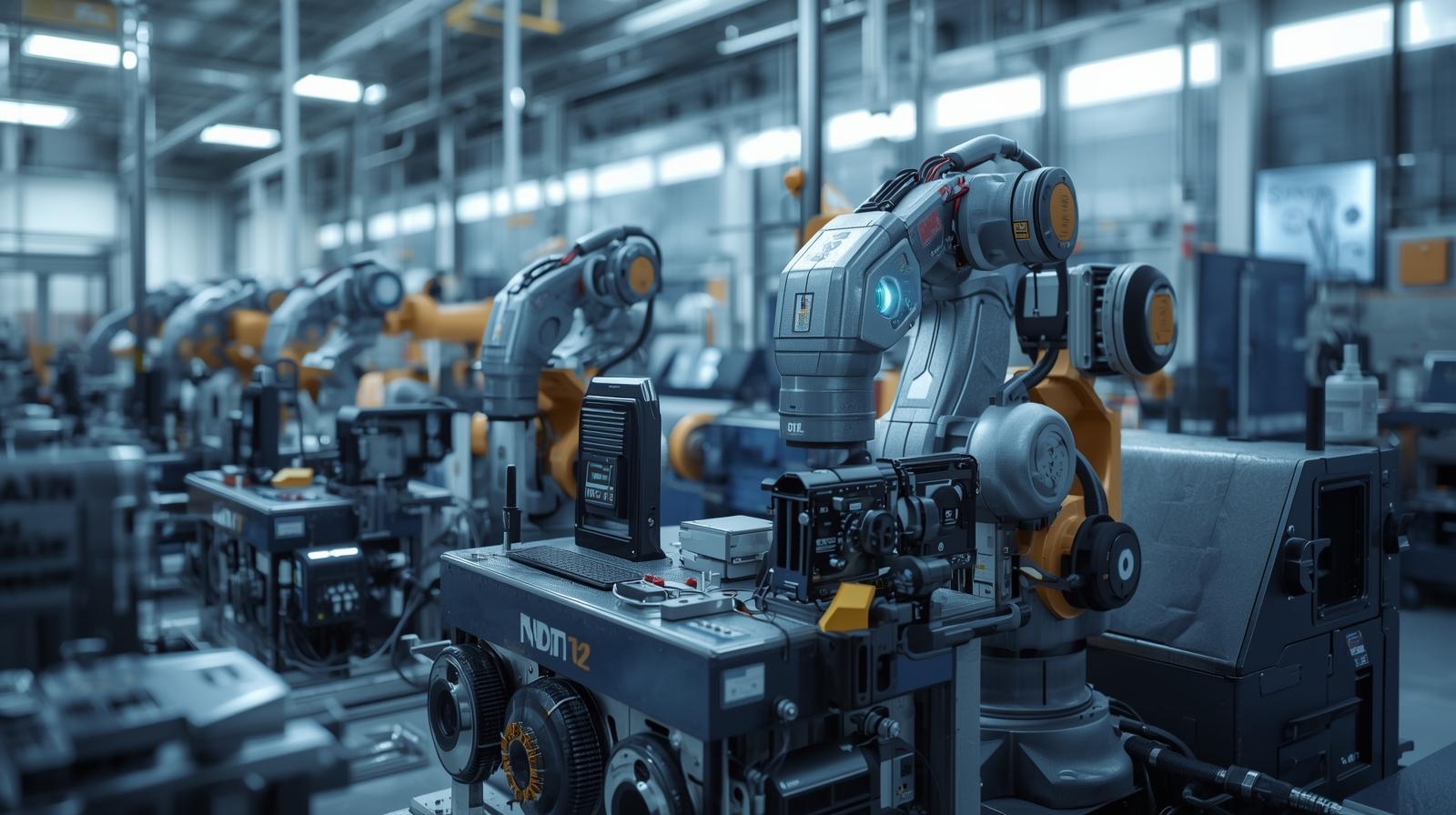The global automated stationary NDT (Non-Destructive Testing) and inspection systems market is undergoing a transformative shift, driven by the accelerating adoption of Industry 4.0 technologies. As manufacturers demand higher precision, faster inspection cycles, and reduced human error, the integration of automation, artificial intelligence (AI), and machine learning into stationary NDT systems has become not just advantageous — but essential.
From aerospace to oil & gas, automotive to power generation, industries are investing in next-gen NDT and inspection solutions to ensure operational integrity, reduce downtime, and meet increasingly stringent regulatory and quality standards.
What Are Automated Stationary NDT & Inspection Systems?
Automated stationary NDT systems are fixed, high-precision machines used to evaluate the properties of materials, components, or assemblies — without causing any damage. Unlike portable or manual systems, stationary setups offer consistent, repeatable, and automated inspection capabilities.
These systems are ideal for high-volume, continuous testing environments and are typically integrated directly into production lines or quality control stations. Technologies like ultrasonic testing, eddy current testing, radiography, and visual inspection using AI-driven cameras are commonly used.
Industry 4.0: A Catalyst for Growth
The fourth industrial revolution — or Industry 4.0 — has introduced a wave of intelligent automation, real-time data analytics, and interconnected manufacturing systems. For the stationary NDT market, this revolution translates into:
Smart Sensors & IoT Integration: Enabling real-time monitoring of equipment and materials, improving predictive maintenance and process control.
Download PDF Brochure @ https://www.marketsandmarkets.com/pdfdownloadNew.asp?id=233564506

AI-Powered Defect Detection: Reducing false positives and improving flaw characterization with image recognition, pattern analysis, and deep learning.
Cloud-Based Data Platforms: Allowing remote access to inspection data, easier regulatory reporting, and seamless integration with enterprise systems.
Robotics & Automation: Enhancing consistency and speed, especially in sectors requiring high-throughput, like automotive and electronics manufacturing.
As more manufacturers digitize their operations, stationary NDT systems become a natural extension of this transformation — providing not just inspection, but data-driven insights that improve product quality and operational efficiency.
Key Industry Drivers
1. Quality Assurance at Scale: With growing product complexity and customer expectations, manufacturers are demanding inspection systems that deliver high precision and repeatability — all at scale.
2. Regulatory Compliance: Industries like aerospace, nuclear, and pharmaceuticals face tight inspection and traceability standards. Automated NDT ensures compliance without compromising speed.
3. Labor Shortage & Cost Efficiency: The lack of skilled inspectors and the high cost of manual testing are pushing industries toward automation, where NDT systems can operate continuously with minimal oversight.
4. Aging Infrastructure: In sectors like oil & gas and power generation, aging assets require constant inspection. Automated stationary systems provide a reliable solution for routine, high-volume inspections.
Challenges in Adoption
Despite the clear benefits, the market is not without barriers. High initial capital investment, long integration timelines, and the complexity of legacy system upgrades can deter smaller players. Additionally, ensuring compatibility between NDT equipment and newer smart factory systems remains a technical hurdle for many organizations.
However, growing awareness, vendor support, and the long-term ROI offered by automation are helping ease these adoption challenges.
Competitive Landscape and Innovation
The market is populated by a mix of global players and specialized NDT companies offering tailored solutions. Key players are investing in:
- Modular systems for flexible deployment
- AI-based defect recognition and adaptive learning
- Industry-specific solutions, particularly for aerospace, automotive, and energy
Companies like GE Measurement & Control, Olympus Corporation, MISTRAS Group, and Zetec are at the forefront, while new entrants and startups are disrupting with agile, AI-driven technologies.
Looking Ahead
The global automated stationary NDT & inspection systems market is expected to grow from USD 767.4 million in 2025 to USD 1,195.9 million by 2030, registering a robust CAGR of 9.3%. , especially in regions embracing advanced manufacturing — including North America, Europe, and parts of Asia-Pacific.
As digital transformation continues to reshape industrial operations, stationary NDT systems will not only safeguard product integrity but become a core component of connected, intelligent manufacturing ecosystems.The convergence of automation, AI, and smart factory technology is propelling the automated stationary NDT & inspection systems market into a new era. For manufacturers, this shift offers a clear competitive advantage: better quality, faster throughput, and lower long-term costs.
As Industry 4.0 becomes the new norm, NDT is no longer just a checkpoint — it’s a strategic asset.
FAQs: Automated Stationary NDT & Inspection Systems Market
Q1: What are automated stationary NDT & inspection systems?
Automated stationary NDT (Non-Destructive Testing) and inspection systems are fixed-position machines integrated into manufacturing or testing environments. They assess the integrity, quality, or properties of materials and components without causing damage. Unlike manual or portable systems, these are optimized for high-throughput, consistent, and automated inspections.
Q2: How does Industry 4.0 influence the NDT & inspection systems market?
Industry 4.0 drives the adoption of intelligent, connected systems. Automated stationary NDT systems benefit from real-time data, AI-powered analysis, predictive maintenance, and integration with other smart factory components—making inspection faster, more accurate, and more scalable.
Q3: Which industries are leading in the adoption of automated stationary NDT systems?
Key industries include aerospace, automotive, oil & gas, manufacturing, power generation, and pharmaceuticals. These sectors rely on precise, continuous quality control and often operate under strict regulatory requirements that make automated inspection systems highly valuable.
Q4: What are the main growth drivers for the market?
Growth is fueled by increasing quality assurance needs, regulatory compliance requirements, labor shortages, the rise of smart manufacturing, and the expansion of sectors like aerospace and renewables that require frequent, high-precision inspection.
